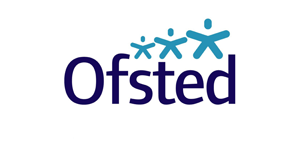Feedback Styles in Coaching

Using Models to Deliver Feedback with Purpose and Impact
This compilation is an educational resource developed by the British School of Coaching. This series is compiled as a foundational resource for coaches in training. Each article introduces a practical coaching tool or model, grounded in theory and supported by real-world application. Whether you’re preparing for ILM coaching qualifications or looking to deepen your understanding of best practice in coaching, this series offers research-informed insights to strengthen your coaching toolkit.
Giving feedback is a core skill in coaching—but how it’s given makes all the difference. Effective feedback is not only about timing or intent—it’s also about structure, language, and style. Different situations call for different approaches, and a skilled coach adapts their feedback style based on the coachee’s needs, learning preferences, and context.
This article introduces three practical models that help coaches deliver feedback clearly, constructively, and with confidence: ORCE, NIP, and DESC.
1. ORCE Model
A Data-Driven Approach to Observational Feedback
The ORCE model helps coaches move from raw observation to structured, evidence-based feedback. It is particularly useful for reducing bias and grounding feedback in facts.
-
O – Observation
Watch and listen attentively. What is actually happening? -
R – Recording
Note down specific behaviours—not interpretations. What did they say or do? -
C – Classifying
Identify patterns or behavioural categories (e.g. tone, posture, energy). -
E – Evaluating
Assess whether the observed behaviours support or hinder the coachee’s goals.
This model helps coaches provide feedback that is objective, balanced, and specific. It reduces the risk of generalisation (“You always…” or “You never…”) and focuses on real-time, actionable insights.
2. NIP Model
A Balanced Feedback Sequence for Directive Moments
The NIP model (Negative–Interesting–Positive) provides a structured format for giving feedback when the coaching moment calls for direct observation and opinion. This model works best when used with permission and within a clearly contracted coaching relationship.
Start with: “What were you trying to achieve?” – Always begin with the coachee’s intent to frame the feedback in context.
Then follow the three-part sequence:
-
N – Negative
Share what didn’t work in relation to their goal (be objective and concise) -
I – Interesting
Reflect on an observation that may offer insight or new awareness -
P – Positive
End with what went well and acknowledge effort, strengths, or progress
This format avoids overwhelming the coachee with criticism and invites reflection while maintaining forward momentum. It is especially effective in performance coaching, presentation feedback, or skills practice debriefs.
3. DESC Model
For Assertive Conversations and Constructive Challenge
When feedback involves confronting difficult behaviour or setting boundaries, many coaches struggle to strike the right balance between being too passive or overly direct. The DESC model supports assertive communication by structuring the conversation around behaviour, impact, and desired change.
-
D – Describe the behaviour
“I noticed during the meeting that you interrupted your colleague several times…” -
E – Express the impact
“…which seemed to shut down further input and affected group engagement.” -
S – Specify the desired behaviour
“In future, I’d like you to give others more space before responding.” -
C – Communicate the consequence
“This would help foster a more open, respectful team culture.”
DESC is useful in situations where boundaries, accountability, or workplace norms need reinforcing. It keeps emotion out of the equation and focuses on facts, impact, and positive change.
Choosing the Right Style
Each model serves a different purpose:
- Use ORCE when you want to ground feedback in observation and analysis
- Use NIP for performance feedback that needs both candour and encouragement
- Use DESC when you need to challenge behaviour or set clear expectations
As with any coaching tool, it’s critical to check in with your coachee: “Would it be helpful if I shared some feedback using a structured model we could agree on?”
Conclusion
The effectiveness of feedback often lies in how it is given. Structured models like ORCE, NIP, and DESC help coaches avoid assumptions, maintain trust, and keep the coaching conversation focused on growth rather than criticism. The more skilful your feedback, the more empowered your coachees become.
References:
- Hill, L.A. (2010). Becoming a Manager: How New Managers Master the Challenges of Leadership. Harvard Business Review Press.
- Rogers, J. (2021). Coaching Skills: A Handbook. 5th ed. Open University Press.
- Starr, J. (2021). The Coaching Manual. 5th ed. Pearson.






